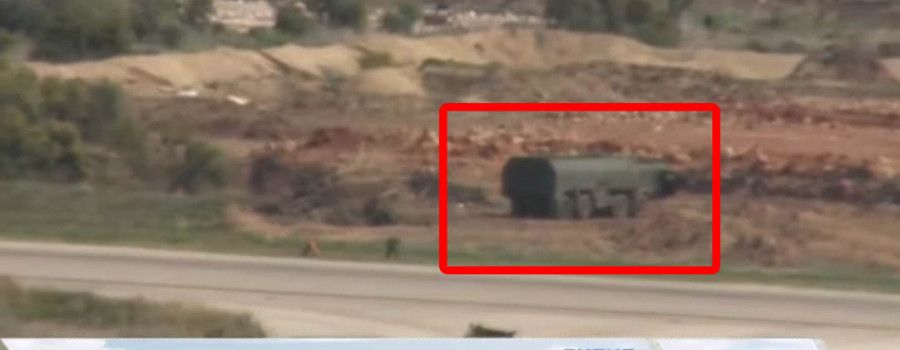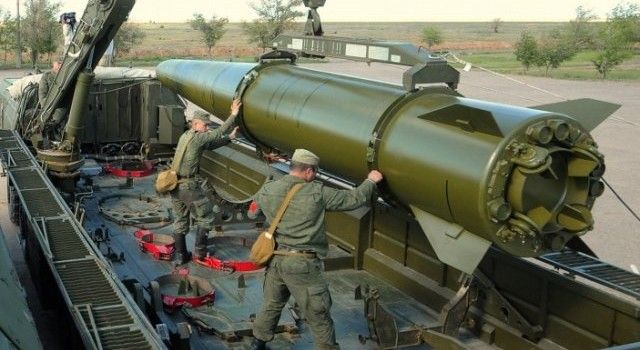
Russian nuclear-capable Iskander-M missile systems have been deployed in Syria in the last few days.
It is the most advanced tactical missile system in the Russian arsenal and is the first time a nuclear-capable surface missile system has been deployed next to Israel since 2007.
DEBKAfile reports:
The Russian Iskander is capable of carrying a nuclear warhead and has never been made available to any foreign army for operational use.

BYPASS THE CENSORS
Sign up to get unfiltered news delivered straight to your inbox.
You can unsubscribe any time. By subscribing you agree to our Terms of Use
No nuclear-capable surface missiles were deployed in any Arab country bordering on Israel since 2007 when Chinese DF-21 missiles were installed in Saudi Arabia.
The Russian missiles (NATO codenamed SS-26) have a range of 500 kilometers (see map).

The Iskander’s transfer to the Kaliningrad enclave in the Baltic Sea in 2015, putting it in range of Central and Western Europe, was a mark of heightened tensions with the West over Russia’s intervention in Ukraine.
Its deployment in Syria, amid a bloody five-year civil war, is a game changer in terms of the balance of strength in the Middle East. Its range – from the Russian Hmeimim base in western Syria – covers all of Israel up to the southern town of Beersheba, points in Turkey up to the outskirts of Ankara and the eastern and central Mediterranean including Cyprus.
The Russian decision to scale down its forces in Syria was only part of the picture: Warplanes and bombers are being pulled out, but as fast as they leave, they are being replaced by the most advanced missile systems in the Russian arsenal.
On March 15, Moscow announced that the formidable S-400 ground-to-air missiles would stay in Syria after the withdrawal. Ten days later, on March 25, the Iskander-M systems were in place. The Iskander-M is rated the top short-range ballistic missile in the world.
The combination, say DEBKAfile’s military sources, makes the Hmeimim base the hub of the most sophisticated missiles in the Middle East.

Its mobile launching vehicle carries two missiles. It only takes a few minutes to prepare them for launch; each may be fired separately. In flight, its operating team can retarget the weapon, adjusting it if necessary to hit moving targets such as missile launchers, tank columns or supply convoys.
Another special feature of the Iskander-M is the control of its warhead by an encoded radio signal that even UAVs or AWACS cannot intercept. The missile can therefore lock on the target without being shot down. The missile’s computer receives an image of the target, locks on it and zooms toward the target at supersonic speed.
The Iskander-M is adaptable for use against small or large targets and can easily evade air defense batteries. Its targets can be set by satellites, surveillance planes, intelligence mechanisms or even field soldiers directing artillery fire from images scanned to their computers. Furthermore, its independent navigation system is not affected by poor weather conditions, including fog or darkness, like other ballistic missiles. It is moreover almost impossible to pre-empt the launch of the Iskander-M due to the mobility of its launching system.
Ruptly TV YouTube video:


